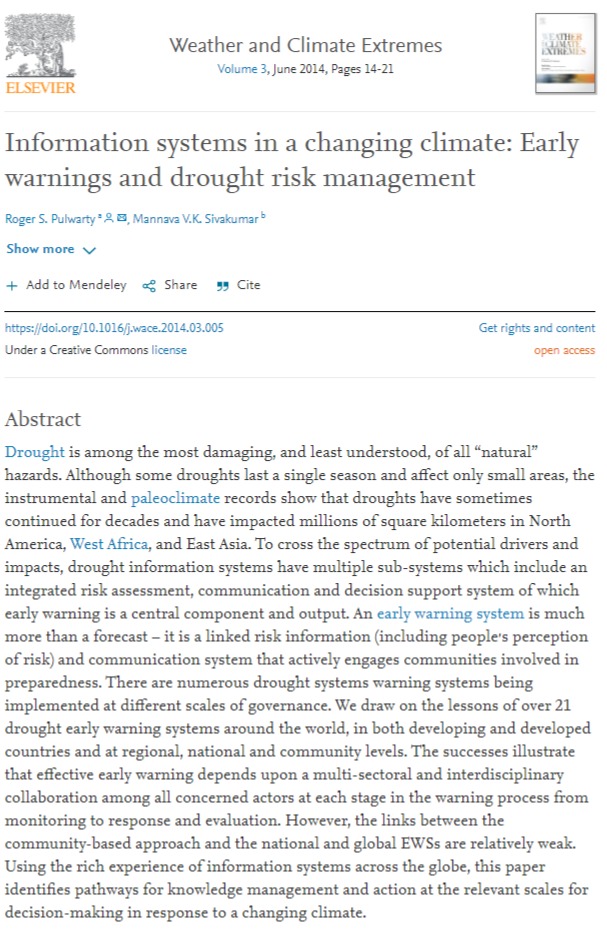
Drought is among the most damaging, and least understood, of all “natural” hazards. Although some droughts last a single season and affect only small areas, the instrumental and paleoclimate records show that droughts have sometimes continued for decades and have impacted millions of square kilometers in North America, West Africa, and East Asia. To cross the spectrum of potential drivers and impacts, drought information systems have multiple sub-systems which include an integrated risk assessment, communication and decision support system of which early warning is a central component and output. An early warning system is much more than a forecast – it is a linked risk information (including people׳s perception of risk) and communication system that actively engages communities involved in preparedness. There are numerous drought systems warning systems being implemented at different scales of governance. We draw on the lessons of over 21 drought early warning systems around the world, in both developing and developed countries and at regional, national and community levels. The successes illustrate that effective early warning depends upon a multi-sectoral and interdisciplinary collaboration among all concerned actors at each stage in the warning process from monitoring to response and evaluation. However, the links between the community-based approach and the national and global EWSs are relatively weak. Using the rich experience of information systems across the globe, this paper identifies pathways for knowledge management and action at the relevant scales for decision-making in response to a changing climate.